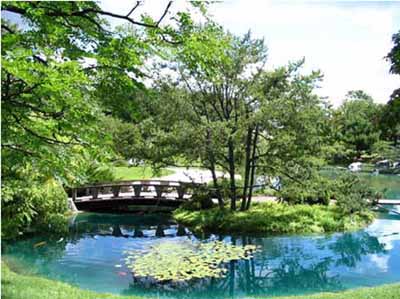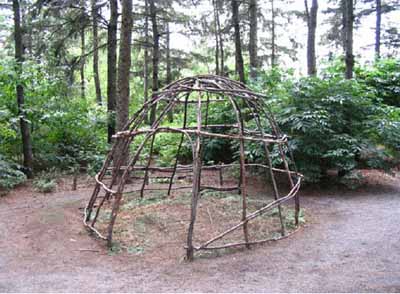Montréal Botanical Garden National Historic Site

© Parks Canada/Nathalie Clerk, 2006
The Montréal Botanical Garden was designated a national historic site in 2008.
Commemorative plaque: 4101 Sherbrooke Street East, Montréal, Quebec (in the garden)Footnote 1
Founded in 1931, this garden is the work of renowned botanist Brother Marie-Victorin, who initiated and directed the project, and landscape architect Henry Teuscher, who conceived the design. The beauty, diversity, and wealth of its collections reflect the founders' vision of the "ideal botanical garden," in terms of its aesthetic qualities, and its scientific, educational, and social functions. With its 22,000 plant species and cultivars, large exhibition greenhouses, thirty thematic gardens, and extensive Arboretum, it is one of the most important botanical gardens in the world.
Description of historic place
Montréal Botanical Garden National Historic Site of Canada is a botanical garden built in the 20th century, which now occupies a square plot of land of 75 hectares in eastern Montréal, Quebec. It consists of a cultural landscape of formal and picturesque character comprising some thirty thematic gardens, about ten exhibition greenhouses, an arboretum and an “H” shaped administrative pavilion conceived in the Beaux-Arts and Art Deco styles. Official recognition refers to the legal limits of the Montréal Botanical Garden.

© Parks Canada/Nathalie Clerk, 2006

© Parks Canada/Nathalie Clerk, 2006
Heritage value
Montréal Botanical Garden was designated a national historic site of Canada in 2007 for the following reasons:
- it is one of the most important botanical gardens in the world by virtue of the extent of its collections and facilities, such as its 22,000 plant species and cultivars, ten large exhibition greenhouses, thirty thematic gardens and vast Arboretum;
- from the outset in 1931, Brother Marie-Victorin, the scientist and botanist who spearheaded this ambitious project, and Henri Teuscher, the landscape architect who created the plan and set out its broader directions, aimed to create an ideal botanical garden, which it continues to be perpetuated in its strong aesthetic qualities, scientific vocation and educational and social functions;
- the wealth and diversity of its collections devoted to research, conservation, presentation and educational purposes illustrate clearly the mission that is specific to botanical gardens.
The heritage value of the Montréal Botanical Garden lies in its close association with Brother Marie-Victorin, designated a national historic person, the man who instigated the project. The garden is one of his numerous achievements, realized at a time when he was one of the prominent figures in an emerging Canadian scientific movement, making a name for himself through his innovative approach to botany. The Montréal Botanical Garden was conceived in collaboration with Henry Teuscher, the horticulturist, botanist and landscape architect who designed the original garden plans. Many original features of the garden have been preserved; it has evolved harmoniously over time, remaining a steadfast representation of the primary intentions of the designer.
The main functions of the modern botanical gardens are research, conservation, presentation and education, which the Montréal Botanical Garden has adhered to since its conception in 1931 and opening to the public in 1936. In 1938, Brother Marie-Victorian founded L’École d’apprentissage horticole and reserved a part of the Montréal Botanical Gardens for young scholars and researchers. In addition to its sustainability, the scientific and aesthetic values of the venue lie in its scope, comprehensiveness and complexity, and the quality of its facilities. The rarity of the garden is also notable, since it is one of the principal botanical gardens in the world. The aesthetic experience is based amongst other things, on the beauty of the venue as a whole, including the spectrum of colours of vegetation, the diversity of arrangements and forms, and the contrasts as well as harmony existing between each installation.
Source: Historic Sites and Monuments Board of Canada, Minutes, July 2007.
The National Program of Historical Commemoration relies on the participation of Canadians in the identification of places, events and persons of national historic significance. Any member of the public can nominate a topic for consideration by the Historic Sites and Monuments Board of Canada.
Related links
Related information about this designation
- Date modified :